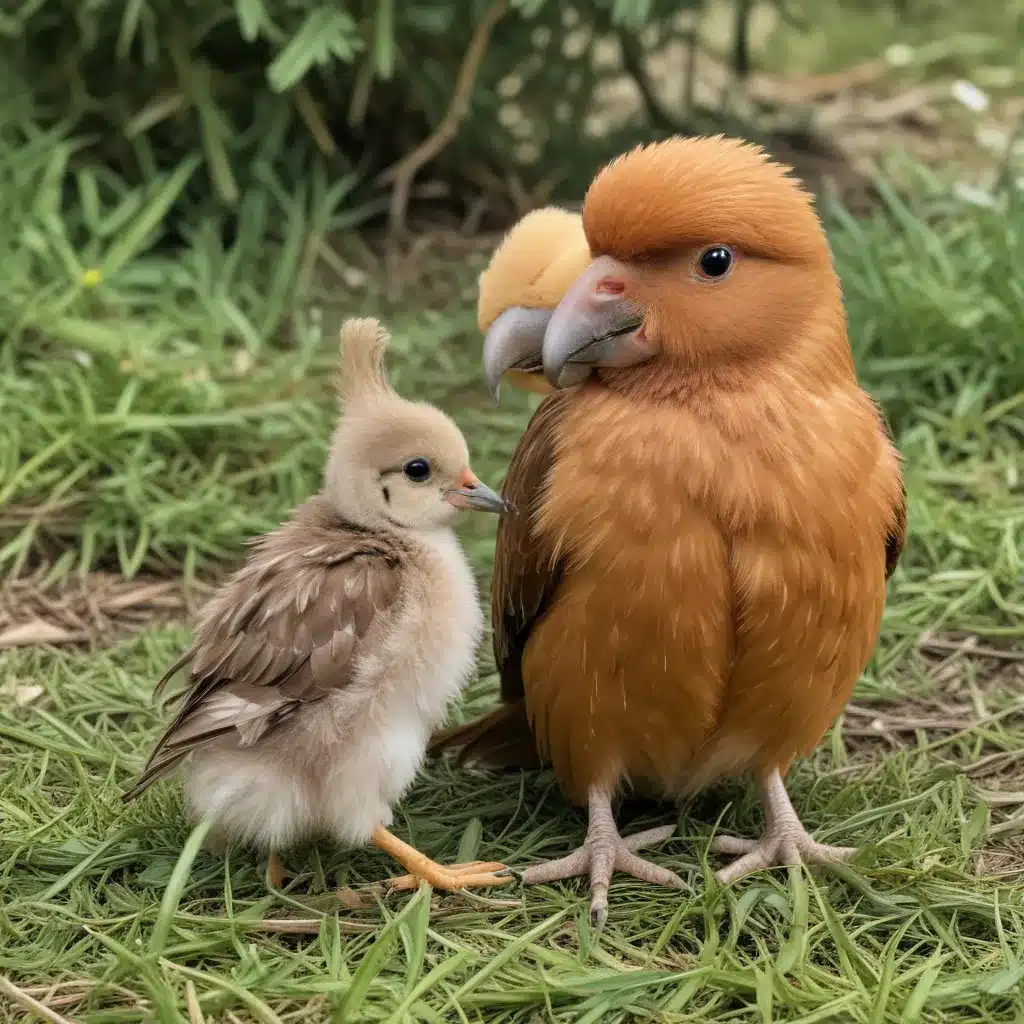
Avian Companions
As an experienced avian caretaker, I’ve had the privilege of witnessing the remarkable intelligence and complex social behaviors of our feathered friends. From the vibrant plumage of parrots to the graceful movements of songbirds, the avian community is a diverse and captivating realm. These remarkable creatures possess a unique language, intricate social dynamics, and a deep capacity for learning and bonding.
The Feathered Community
Whether you’re the proud owner of a companion parrot or a passionate birdwatcher, understanding the intricacies of avian behavior is the key to fostering a fulfilling and enriching relationship with our feathered companions. Birds are highly social animals, with complex communication systems that go far beyond the simple tweets and chirps we often associate with them.
From the boisterous squawks of cockatoos to the melodious songs of canaries, each species has its own distinct vocal repertoire, conveying a wealth of information about their emotional state, social status, and environmental cues. Beyond their vocalizations, birds also rely heavily on body language, using subtle shifts in posture, wing movements, and eye contact to express themselves.
Birding Behaviour
Observing the dynamic interplay within a flock of wild birds or the intimate interactions between a parrot and its human caretaker can be a truly mesmerizing experience. These feathered beings exhibit a remarkable range of behaviors, from playful antics to protective parenting, all of which offer valuable insights into their cognitive and social capabilities.
Positive Reinforcement Techniques
As an expert in avian care, I’ve found that the key to unlocking the secrets of successful bird training lies in the power of positive reinforcement. This approach, which focuses on rewarding desired behaviors rather than punishing unwanted ones, has proven to be a highly effective and humane method for working with our feathered friends.
The Language of Birds
To truly understand and communicate with our avian companions, we must become fluent in their unique language. Just as humans rely on both verbal and nonverbal cues to express themselves, birds have developed a rich tapestry of vocalizations and body language to convey their thoughts, emotions, and intentions.
Vocal Expressions
The vocal repertoire of birds is truly remarkable, with each species possessing a diverse range of calls, whistles, and songs. From the shrill alarm calls of parrots warning of potential danger to the soothing lullabies of canaries, these vocalizations serve a variety of purposes, such as territorial defense, courtship, and flock cohesion.
Body Language
Equally important in the language of birds is their intricate body language. The positioning of their wings, the fluffing of their feathers, and the tilt of their heads all carry significant meaning, providing valuable insights into their emotional state and social interactions. By observing and understanding these subtle cues, we can better anticipate and respond to our feathered friends’ needs and preferences.
Interspecies Communication
The communication between birds and humans is a fascinating realm, as we strive to bridge the gap between our vastly different species. Through positive reinforcement training and a deep understanding of avian behavior, we can establish a profound level of interspecies cooperation and trust, allowing us to work together in mutually beneficial ways.
Cultivating Trust
At the heart of any successful relationship, whether between two humans or a human and their feathered companion, is the foundation of trust. In the world of avian care, building this trust is crucial for fostering a strong and lasting bond.
Bonding with Avian Pets
When welcoming a new avian companion into our lives, it’s essential to approach the relationship with patience, empathy, and a deep understanding of their unique needs and preferences. By establishing consistent routines, providing a safe and enriching environment, and engaging in positive reinforcement training, we can help our feathered friends feel secure, respected, and valued.
Cooperative Training
Positive reinforcement training is a powerful tool for not only teaching our birds new behaviors but also for strengthening the bond between us. By rewarding desired actions with treats, praise, or other forms of positive reinforcement, we create a cooperative and mutually beneficial learning experience that builds trust and understanding.
Mutual Understanding
As we delve deeper into the world of avian communication and behavior, we unlock the secrets to a truly profound and enriching relationship with our feathered companions. By recognizing and responding to their unique needs, we foster an environment of mutual understanding, where both bird and human can thrive.
Feathered Friendships
The bonds we forge with our avian companions are truly remarkable, transcending the boundaries of species and creating a unique and deeply fulfilling form of interspecies friendship.
Companion Birds
For many of us, our feathered friends have become cherished members of our families, offering companionship, entertainment, and a window into the fascinating world of avian behavior. Whether you share your home with a playful parrot or a serene cockatiel, the joy and enrichment they bring to our lives is truly invaluable.
Flock Dynamics
In the wild, birds thrive in complex social structures, with intricate hierarchies, communication systems, and cooperative behaviors. By understanding and respecting these natural flock dynamics, we can create a harmonious and enriching environment for our captive avian companions, fostering a sense of security and belonging.
Interspecies Relationships
The interplay between humans and birds is a testament to the remarkable capacity for cross-species communication and cooperation. Through positive reinforcement training, empathetic care, and a deep appreciation for avian behavior, we can forge lasting and meaningful relationships with our feathered friends, unlocking a world of wonder, joy, and mutual understanding.
As an experienced avian caretaker, I’ve witnessed the transformative power of positive reinforcement in building trust and cooperation with our feathered companions. By embracing their unique language, respecting their natural behaviors, and cultivating a nurturing and enriching environment, we can unlock the secrets to successful and fulfilling relationships with our avian friends. So, let us embark on this journey together, celebrating the vibrant diversity of the avian community and the profound connections we can forge with our feathered companions.


